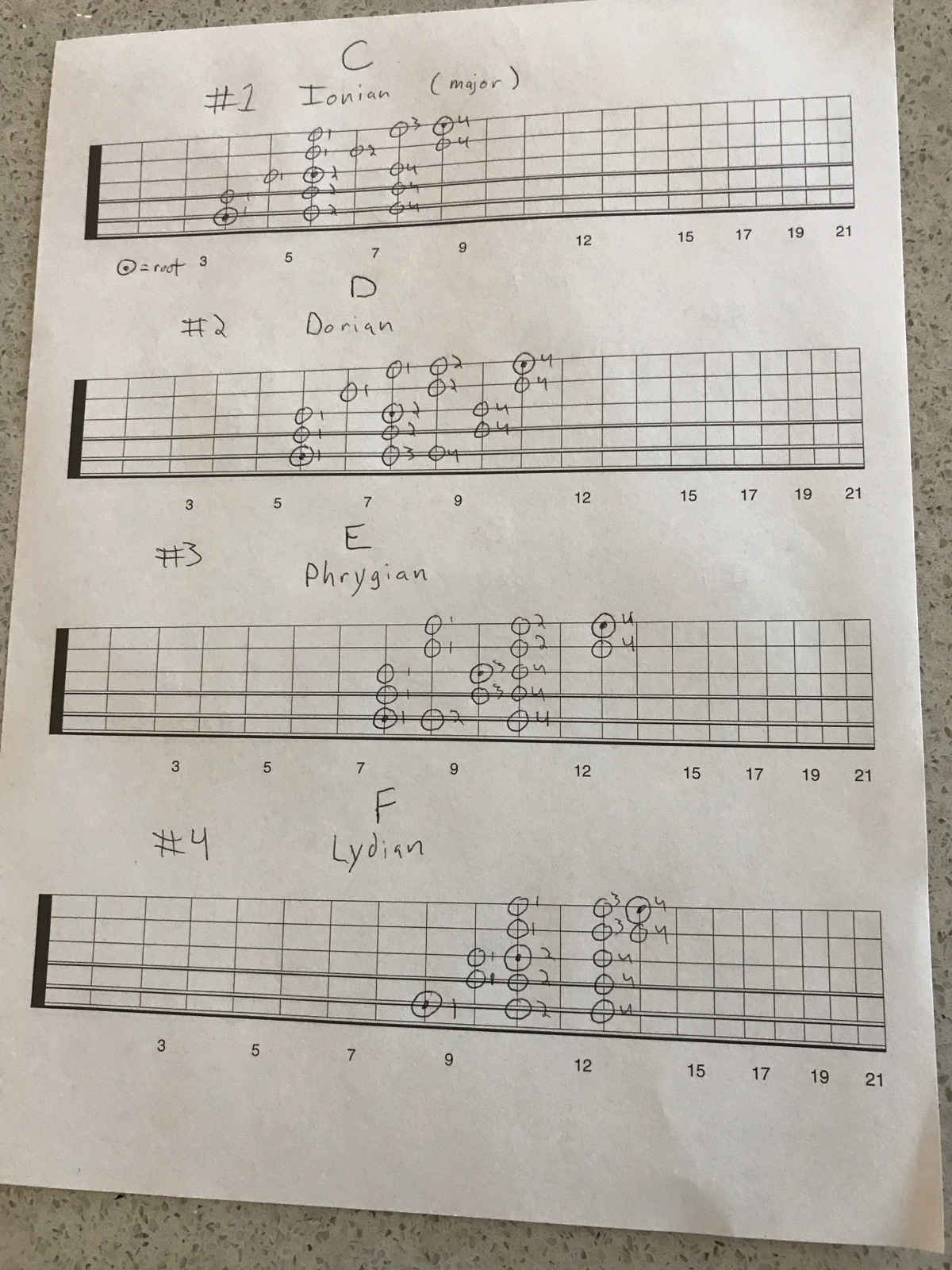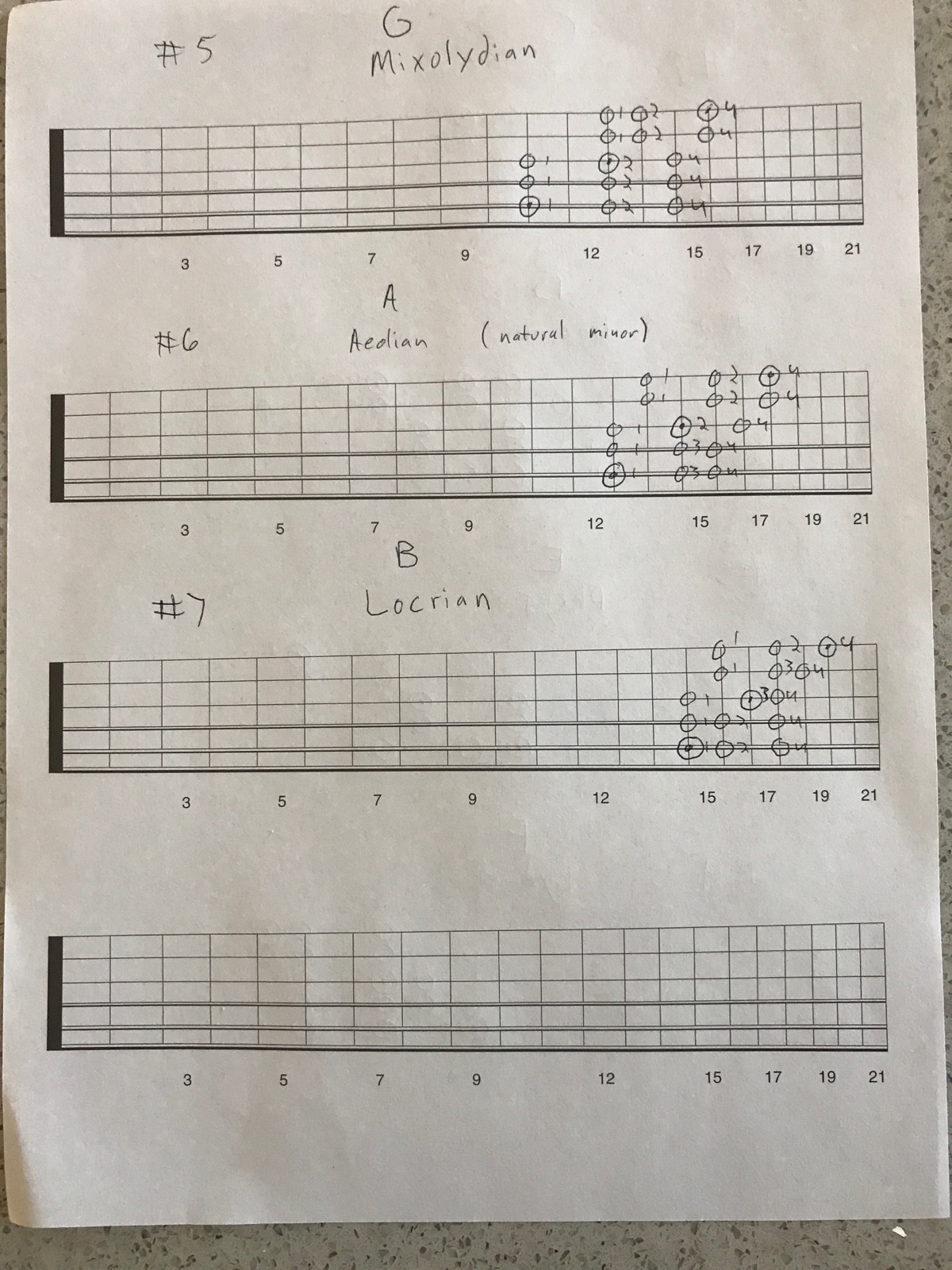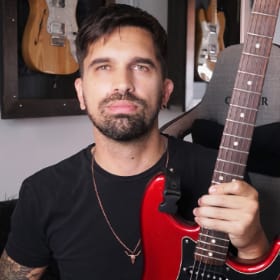Major Scale/3 Nps Strategy And Implementation Question(s), Best way to play the major scale in any key using 3NPS |
|
 |
Replies
|
|
|
|
| Nov 19 2017, 05:40 PM |
|
My original logic was once you learn the pentatonic scales, then you fill in the missing 2 notes to have your major scale and accompanying modes. I'm guessing this is similar or is the CAGED system's logic? On one hand I see the benefit to it. For instance, Fade to Black by Metallica. @ 51 seconds in, Kirk literally plays the E Phyrgian/ C major scale note for note. The way he is playing it is in the spirit of the CAGED system. Learning the 3NPS style, there is less "boxiness" to this sort of style. On the other, you do get an awesome fluidity from 3NPS and you cover much more fretboard than with CAGED. Hope this makes my head space a little clearer... That's totally clear and right for me. As I've said in the video, I related everything to the caged system, and all the other stuff is to find different ways to create phrases and melodies. I'm also learning new approaches for guitarists that I like. It's a neverending and amazing process. -------------------- My lessons
Do you need a Guitar Plan? Join Gab's Army Check my band:Cirse Check my soundcloud:Soundcloud Please subscribe to my:Youtube Channel |
|
|
||
Posts in this topic
 kirkhamster Major Scale/3 Nps Strategy And Implementation Question(s) Nov 12 2017, 01:11 AM
kirkhamster Major Scale/3 Nps Strategy And Implementation Question(s) Nov 12 2017, 01:11 AM



 kirkhamster QUOTE (Gabriel Leopardi @ Nov 19 2017, 04... Nov 20 2017, 01:42 AM
kirkhamster QUOTE (Gabriel Leopardi @ Nov 19 2017, 04... Nov 20 2017, 01:42 AM
nnn



 Kristofer Dahl QUOTE (kirkhamster @ Nov 19 2017, 10:24 A... Nov 20 2017, 11:31 AM
Kristofer Dahl QUOTE (kirkhamster @ Nov 19 2017, 10:24 A... Nov 20 2017, 11:31 AM


 kirkhamster QUOTE (Kristofer Dahl @ Nov 20 2017, 10:3... Nov 20 2017, 09:37 PM
kirkhamster QUOTE (Kristofer Dahl @ Nov 20 2017, 10:3... Nov 20 2017, 09:37 PM


 Kristofer Dahl QUOTE (kirkhamster @ Nov 20 2017, 09:37 P... Nov 22 2017, 09:28 AM
Kristofer Dahl QUOTE (kirkhamster @ Nov 20 2017, 09:37 P... Nov 22 2017, 09:28 AM
nnn
nnn
nnn
nnn


 Gabriel Leopardi QUOTE (kirkhamster @ Nov 15 2017, 06:47 P... Nov 16 2017, 02:37 PM
Gabriel Leopardi QUOTE (kirkhamster @ Nov 15 2017, 06:47 P... Nov 16 2017, 02:37 PM
nnn
nnn

 Gabriel Leopardi Hi mate! Great to see you getting into major s... Nov 15 2017, 05:33 PM
Gabriel Leopardi Hi mate! Great to see you getting into major s... Nov 15 2017, 05:33 PM
 Gabriel Leopardi Here we go! Nov 16 2017, 07:43 PM
Gabriel Leopardi Here we go! Nov 16 2017, 07:43 PM

 kirkhamster QUOTE (Gabriel Leopardi @ Nov 16 2017, 06... Nov 20 2017, 06:42 AM
kirkhamster QUOTE (Gabriel Leopardi @ Nov 16 2017, 06... Nov 20 2017, 06:42 AM
nnn

 Gabriel Leopardi Hi Kirk!
Kris shared everything you need to ... Nov 20 2017, 04:51 PM
Gabriel Leopardi Hi Kirk!
Kris shared everything you need to ... Nov 20 2017, 04:51 PM
nnn
nnn
1 User(s) are reading this topic (1 Guests and 0 Anonymous Users)
0 Members:






















